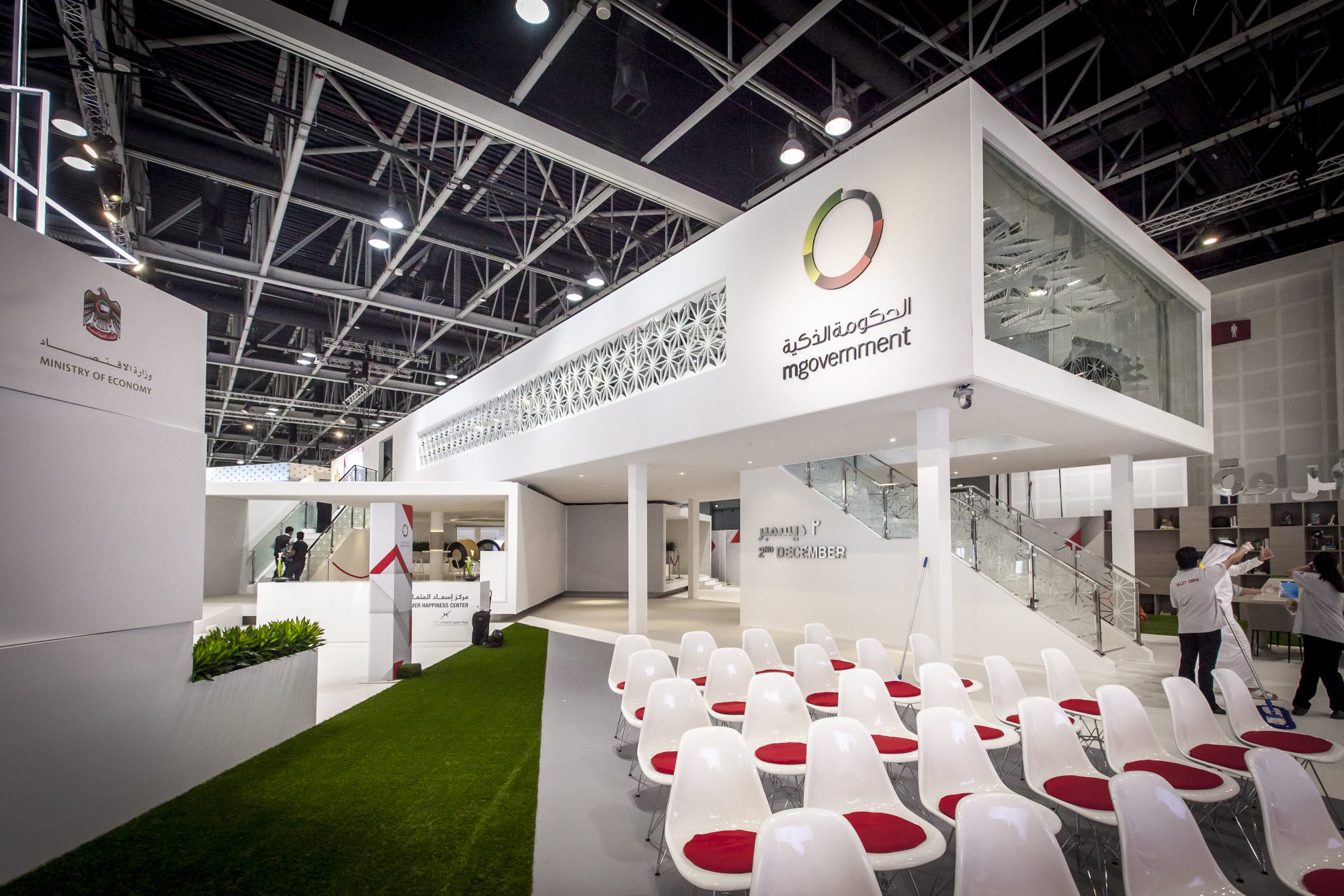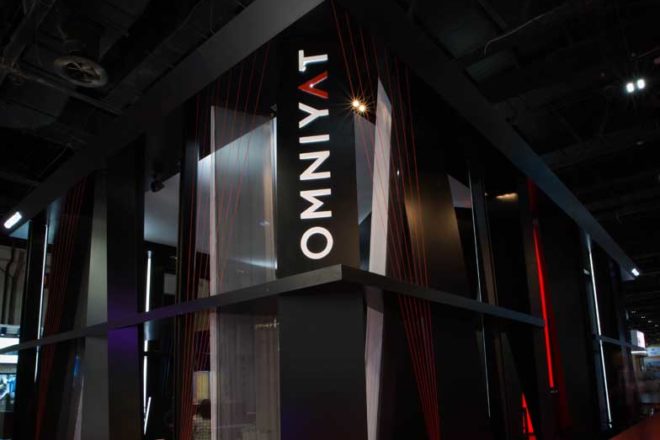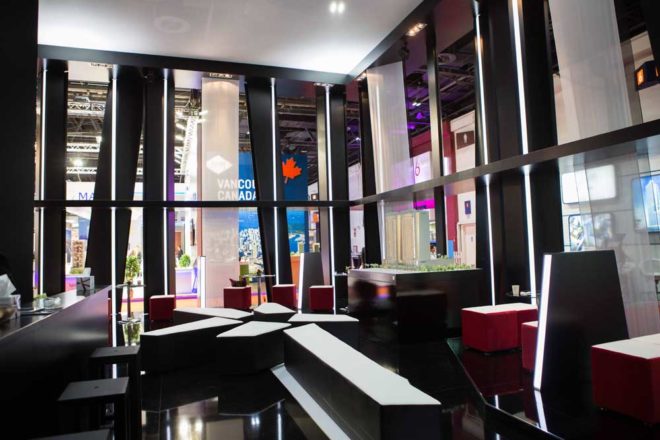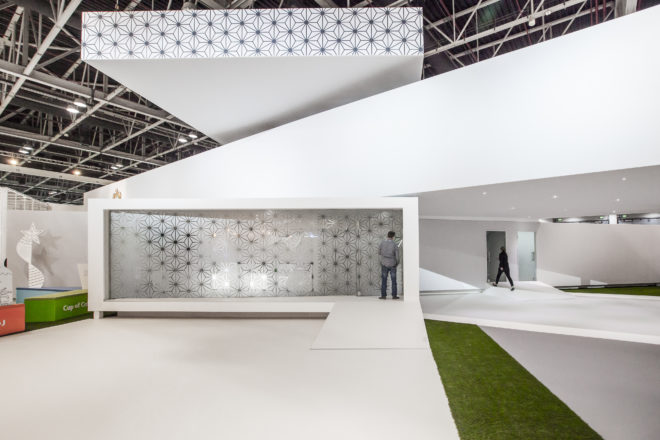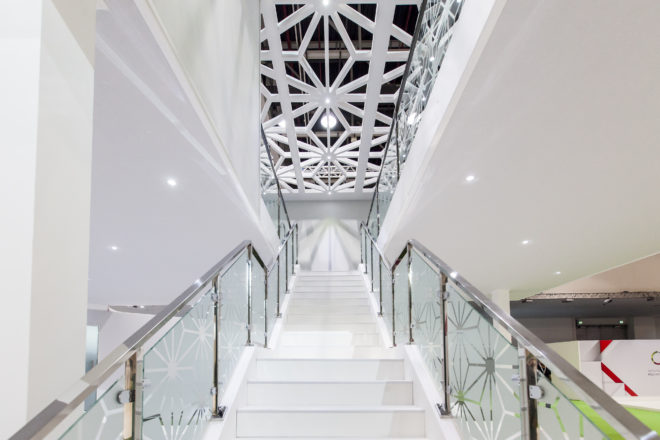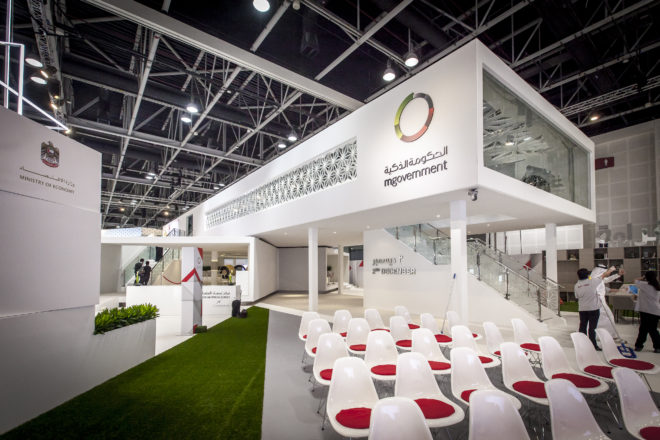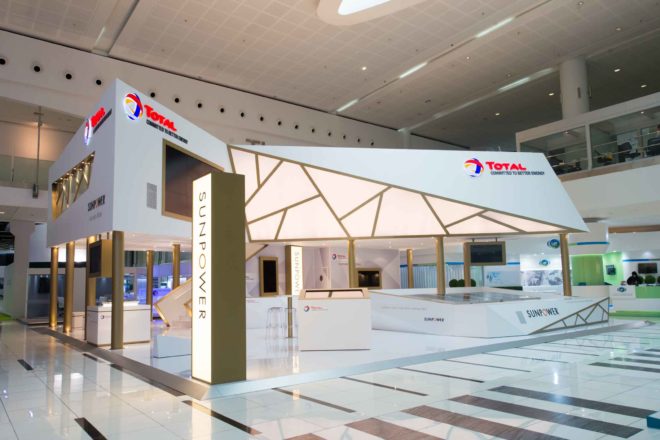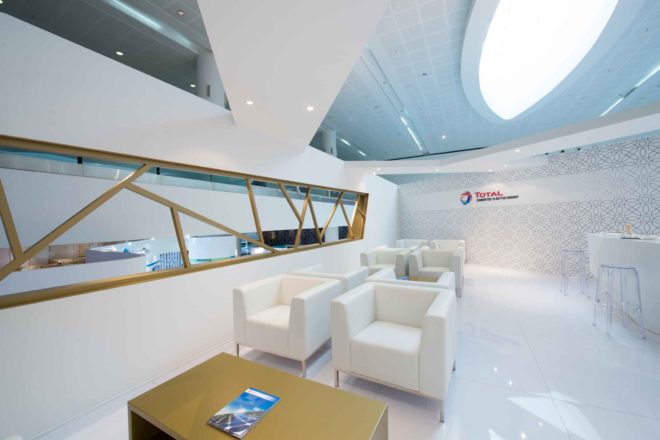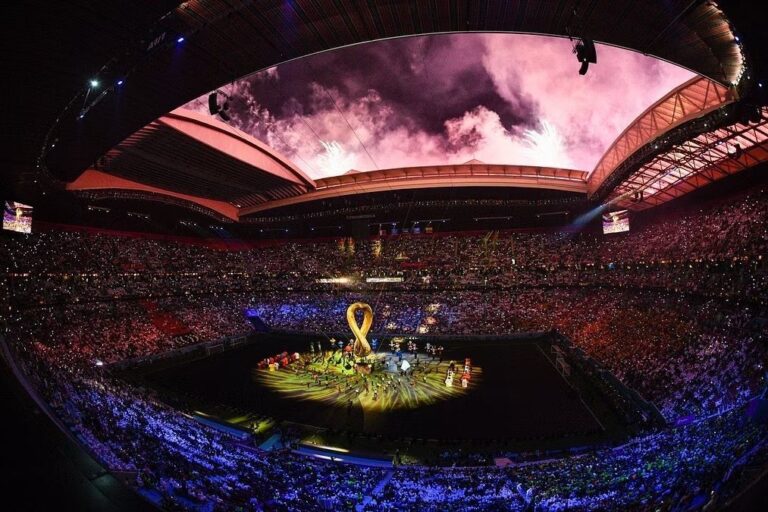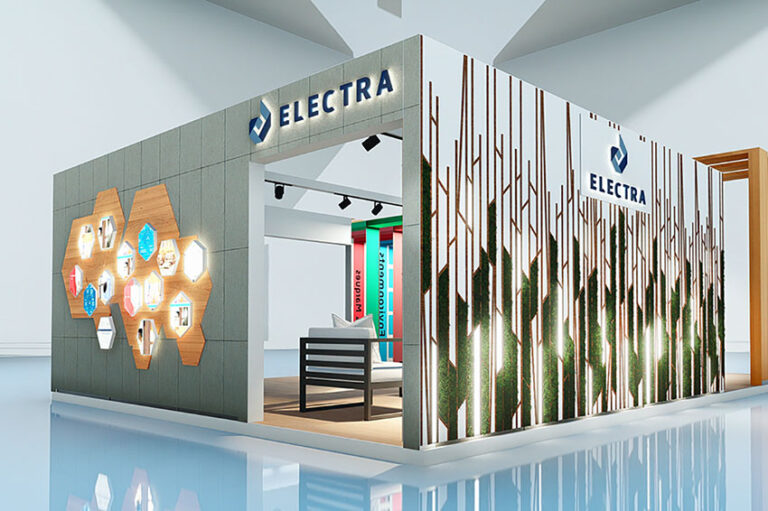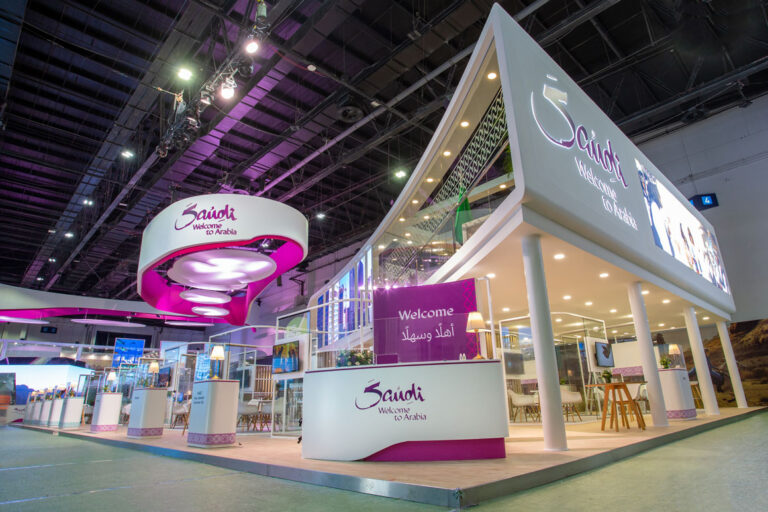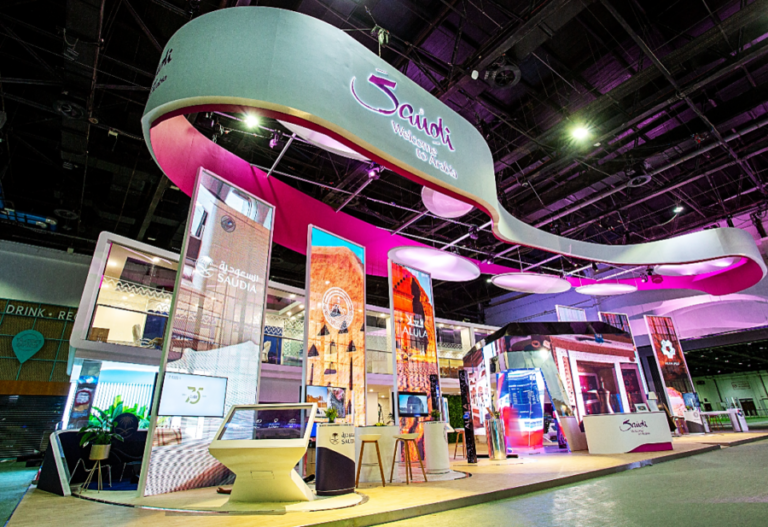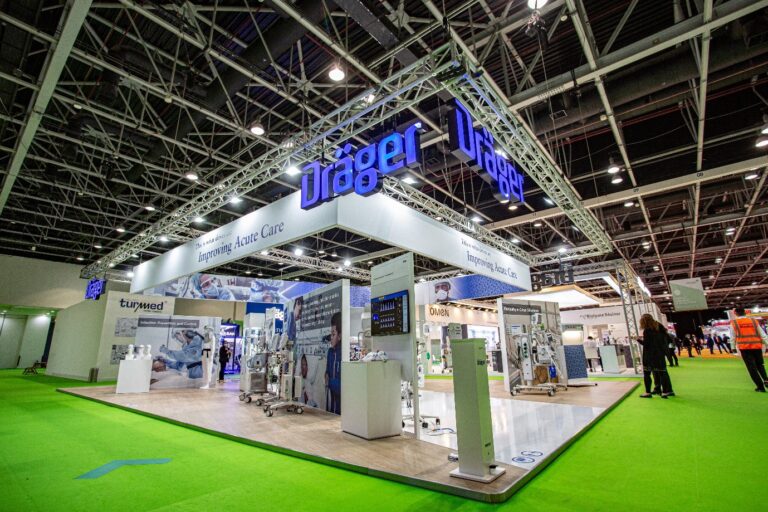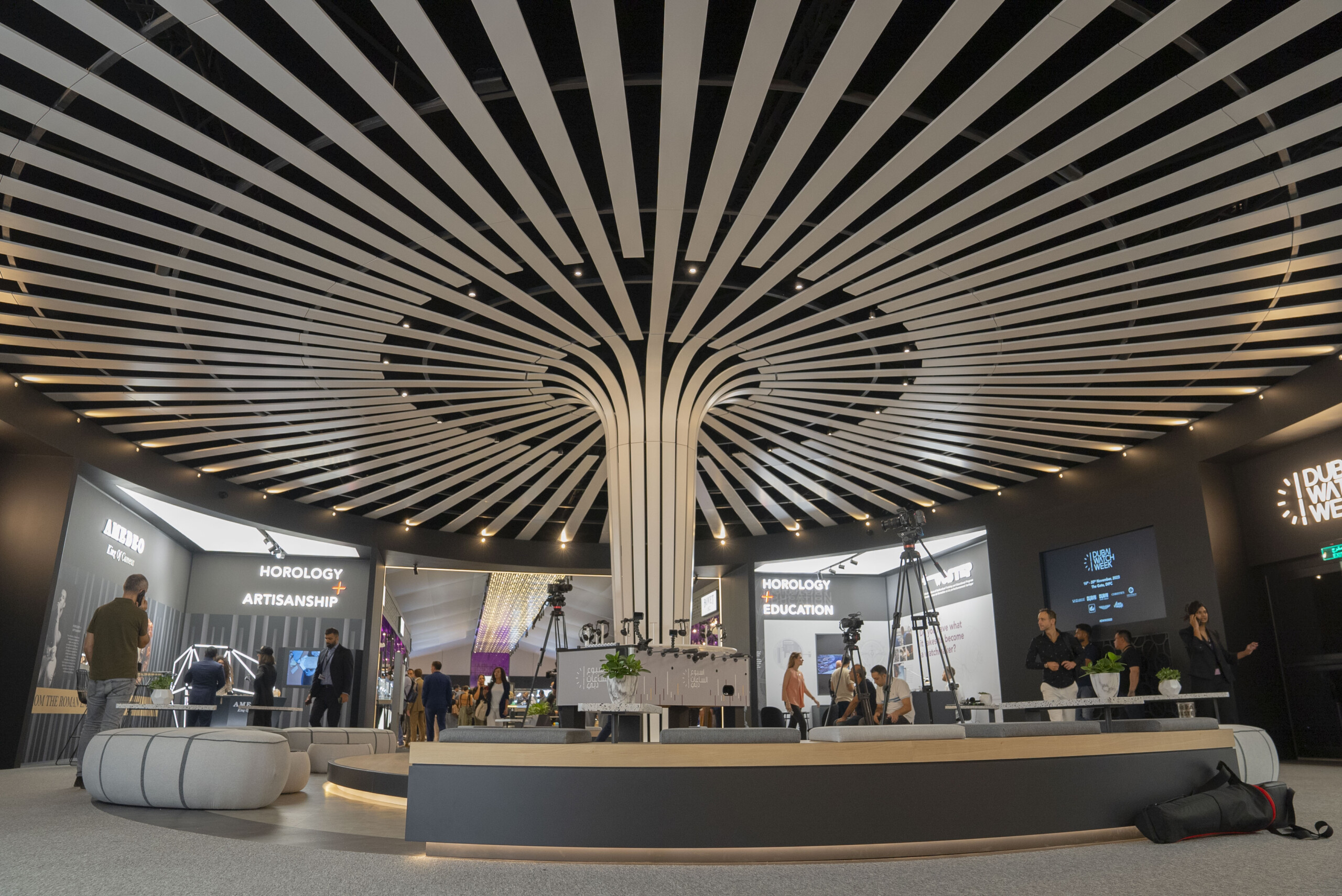
Using Multiple Levels to Maximise Exhibition Stand Impact
Exhibition Design Evolution: Art, Commerce & Creating Immersive Experiences
In the lead up to Dubai Expo 2020, which is expected to be the largest global exposition ever in terms of exhibitors and visitors, it is interesting to look back on the interwoven history of global expositions.
Exhibits have evolved from simple display cases crammed with objects in the case of museums, and standard wooden booths displaying equipment or products, to colourful and complex installations that tell a story about the brand. Today, the primary objective of exhibition stands is not just to move products or promote services, but to create engaging, immersive experiences that will resonate with visitors a long time after the event. This means focusing on how to generate an emotional connection with people to lock in brand loyalty and to lead to recurring business, and not just one-time sales.
So how can your clients stand out from the crowd?
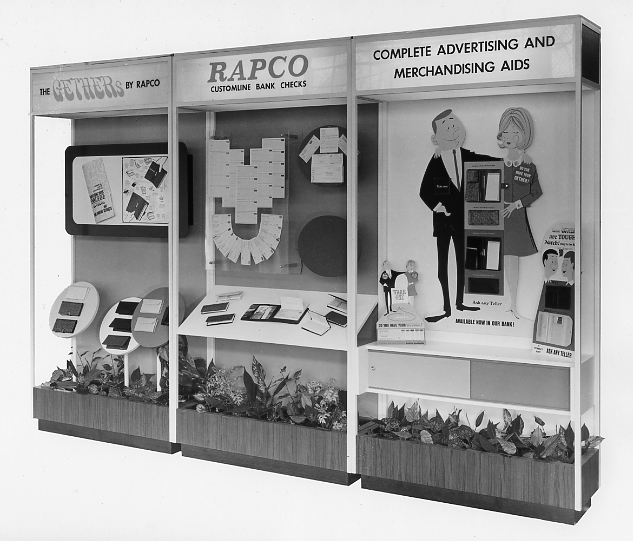 Image Reference: Flickr
Image Reference: Flickr Killer Exhibition Stand Design Features
As mentioned earlier, exhibition stands have evolved away from just being a way to sell products into a way to make a statement about a brand. In this competitive world, you must make a distinctive statement to capture your clients’ target audience and retain their attention.
In earlier posts, we discussed how to identify the best exhibition stand contractors in Dubai and the importance of exhibition stand quality. Here, we will discuss another aspect – how the design and aesthetics can be used to create an impact and an indelible impression.
Lighting Elements: Accent Lighting, Low hanging Lights and Chandeliers
Light is one of the best tools for creating atmosphere and lending depth to an exhibition installation. For the Greenbrier at Middle East Rail 2019, bright accent lights were used around the company’s name, spotlights around the edges of the suspended roof, with the delicate yellow glow of low hanging bulbs. Each different lighting element adds a different lighting temperature to the set up ranging from cool and sharp to warm and homey. The different lighting tones re-enforce the company’s professionalism along with its environmental commitment.

Meanwhile, for Arabian Travel Market in association with A. A. Almoosa inspired by Mirna Tenidis 2018, an enormous crystal chandelier was attached using a truss to the exhibition’s stand ceiling visible. In addition, kinetic crystal chandeliers and spiral lights added to the sense of luxury and movement.
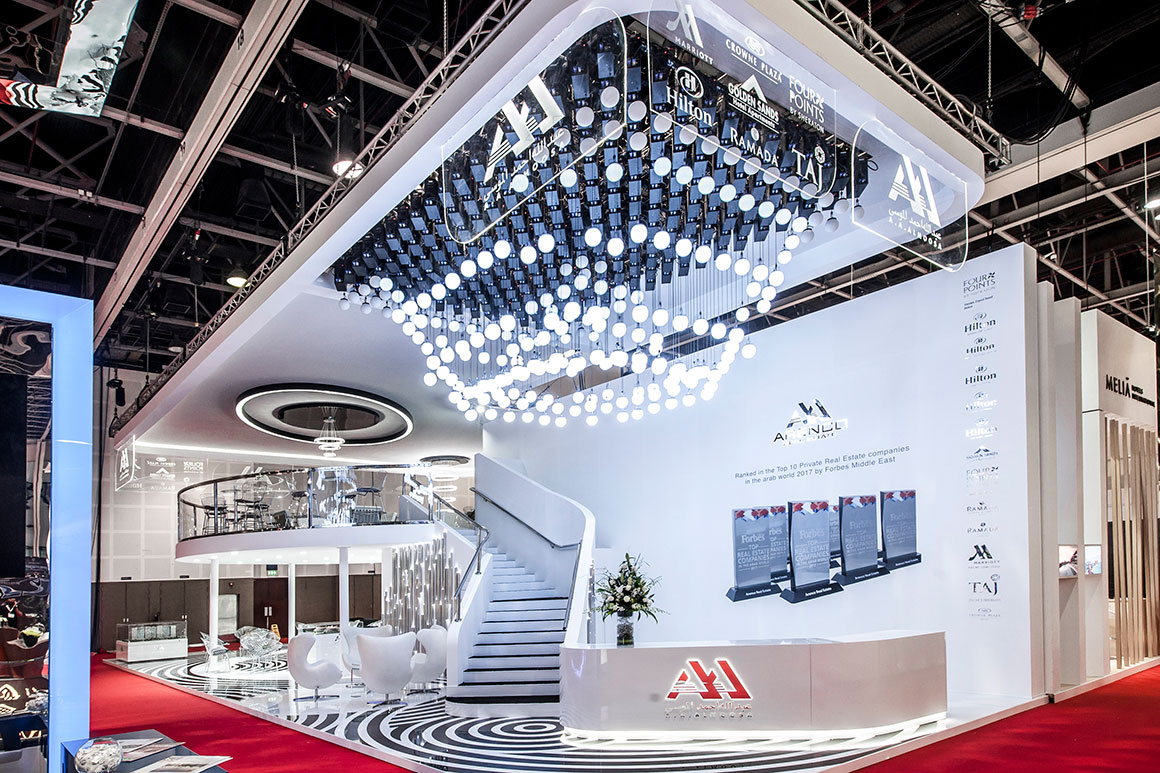
Exhibition Stand Roofing: Overhangs, Multi-roofing, Suspended roofs & Open roofs
In the past, exhibition stand companies did not make use of the space above the stand. But it is an area that can significantly increase awareness and boost impact. There are different types of roofing that can work in exhibition spaces, including overhanging roofs, multi-roofing and open roofs.
Setting up an overhanging roof effectively creates a more enclosed space for the exhibition stand intensifying the sense of a unique experience. It also provides an opportunity to enhance branding and visibility. These elements when used singly or in combination can make any stand unique and distinctive, adding layers and depth to the experience of visitors. Some examples would be:
- The Hensoldt stand at IDEX 2017, designed by the VRPE Team GmbH and delivered by Electra Events, creates an open-sided cube shape that is spacious and fresh, accented with the brands signature colours
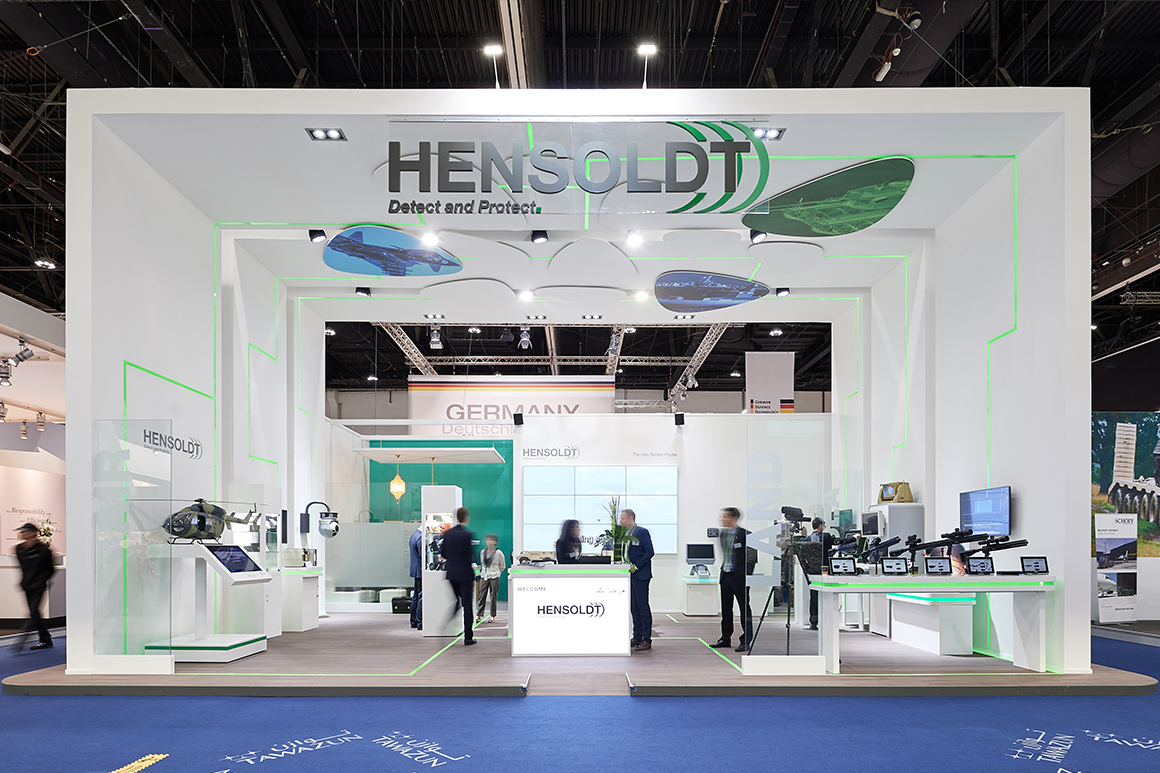
- Core Savills at Cityscape the large minimalist overhanging roof in bright white showcases the company name highlighted in LED lights. This delivers a powerful statement about the brand’s strength. It is modern, urban and professional.

- Hacare at Arabhealth 2019 used a floating roof, suspended above the stand with fitted spotlights.
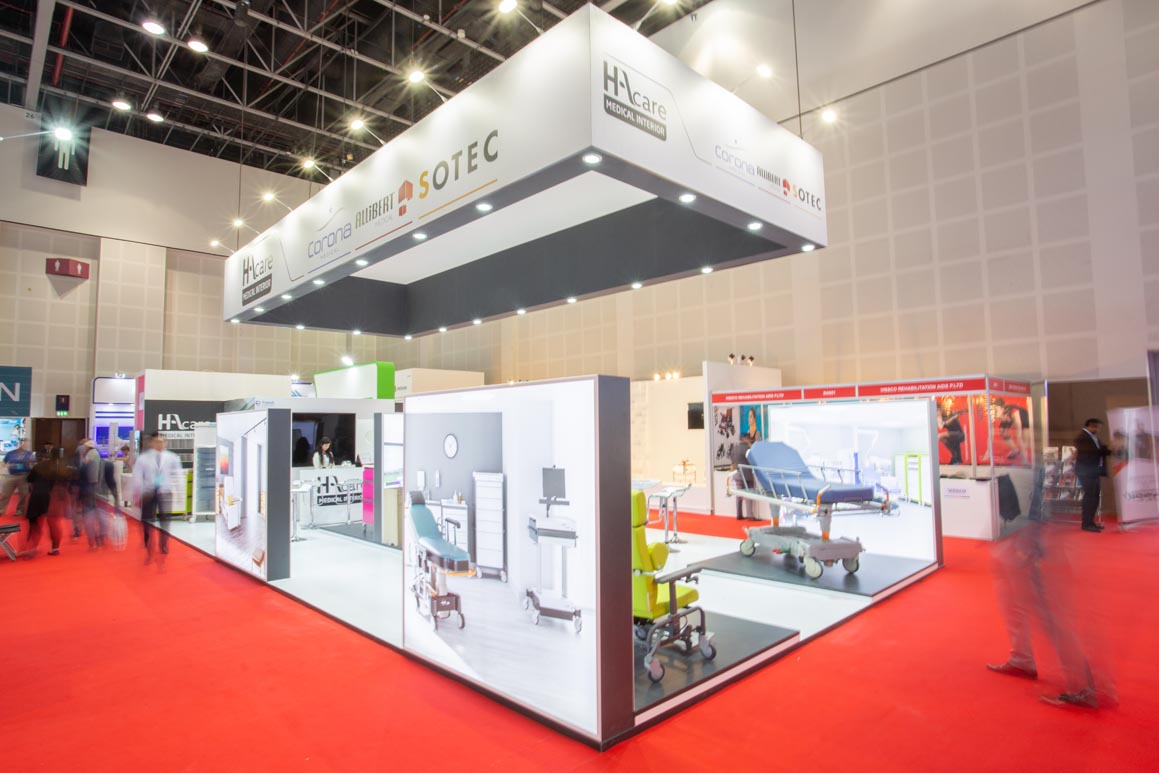
Bespoke enclosures
For brands that want to stress their exclusivity, stands which resemble closed environments can have an irresistible pull to visitors. They arouse curiosity and interest.
- Enne the contemporary design company exhibited at Index 2017 recreated a furniture showroom, a totally enclosed structure that was nevertheless accessible from each side. The open entryways and large glass windows enhanced accessibility while at the same time giving a sense of privacy and distinctiveness
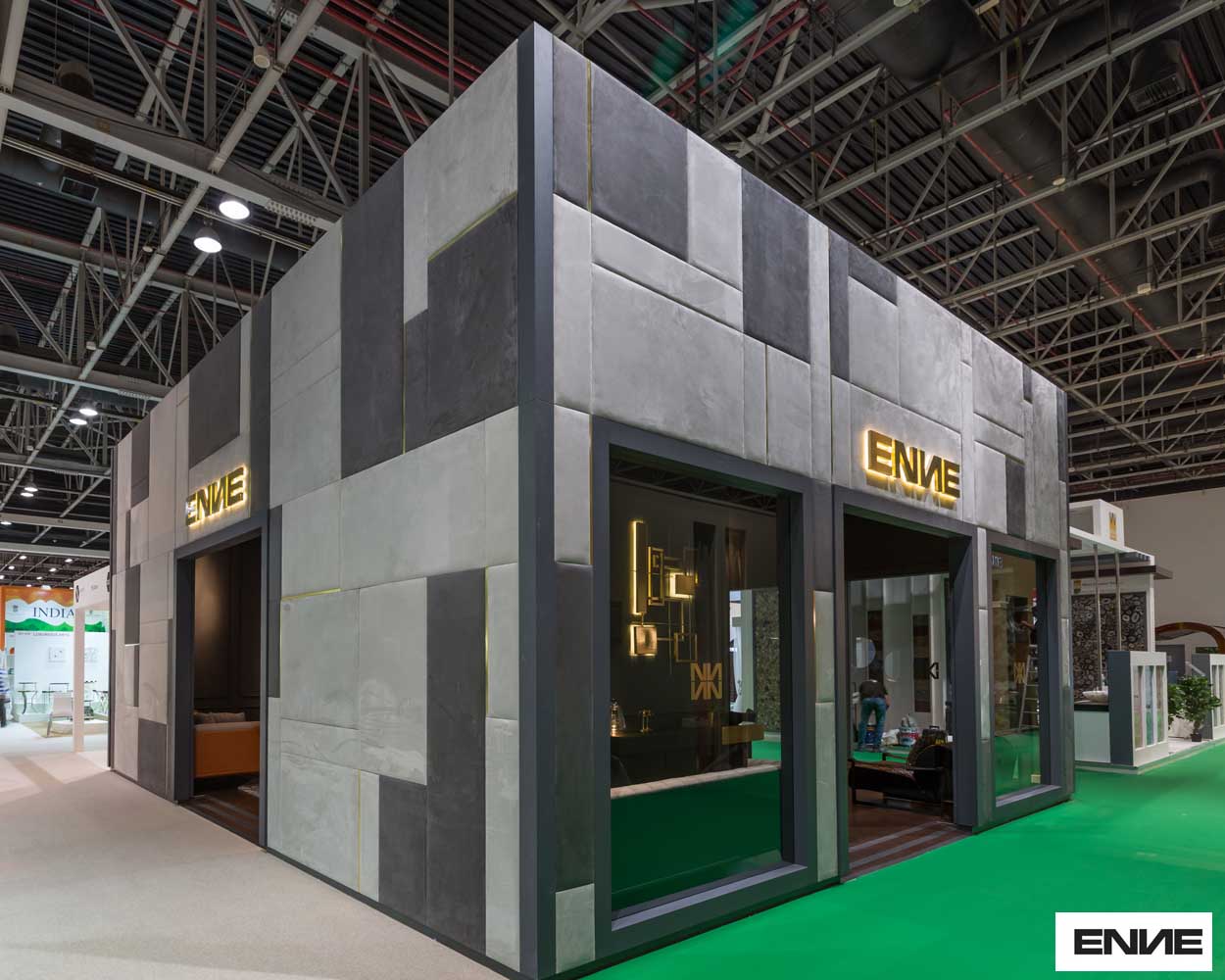
- Enclosed booths like that of Argeville (Softwood) at Beauty World 2017 and WNN at ATM 2015 invite visitors to step inside to their world and one great side-effect of this is the reduction of ambient noise, allowing guests to focus on the brand’s message.
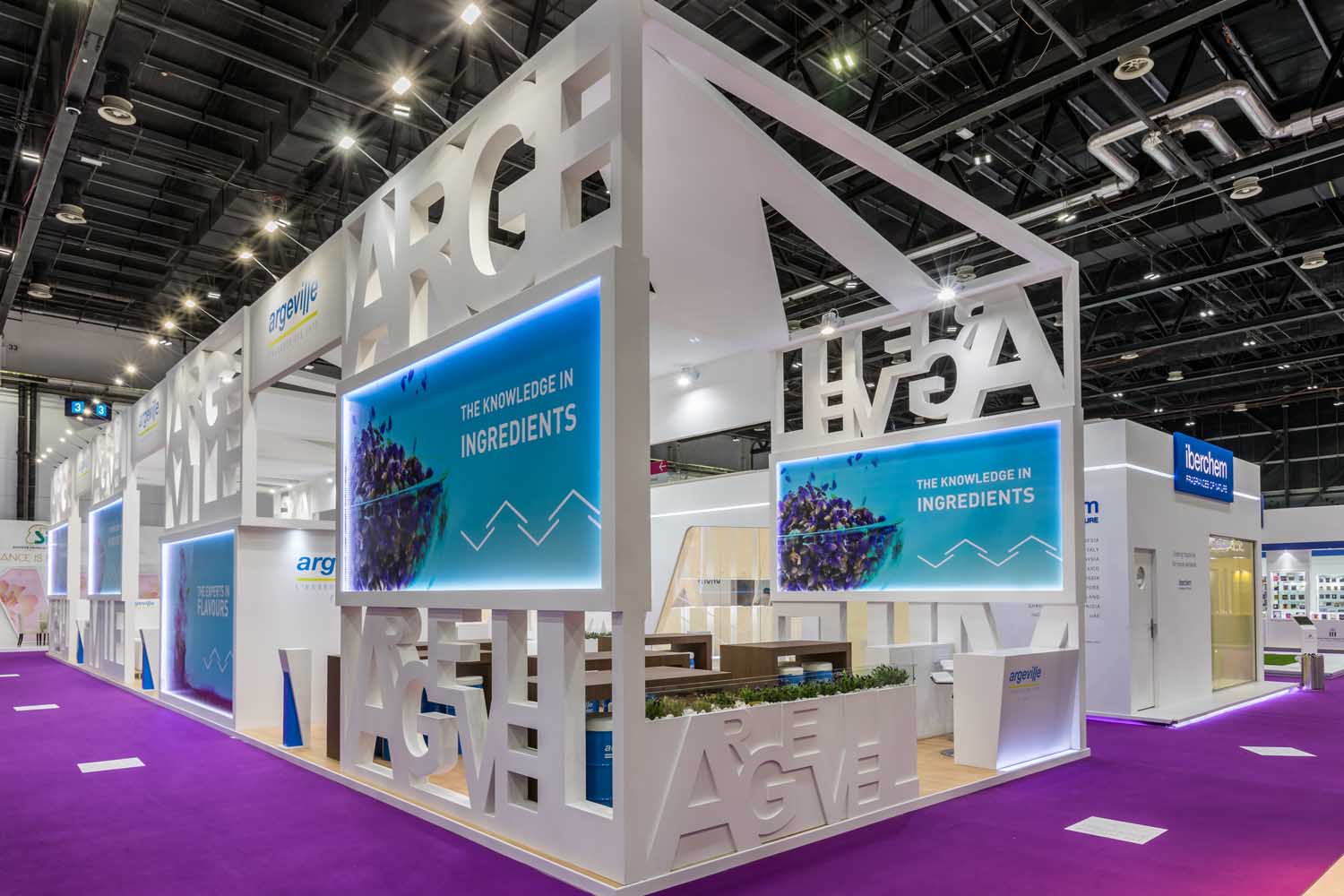 designed by Softwood
designed by Softwood 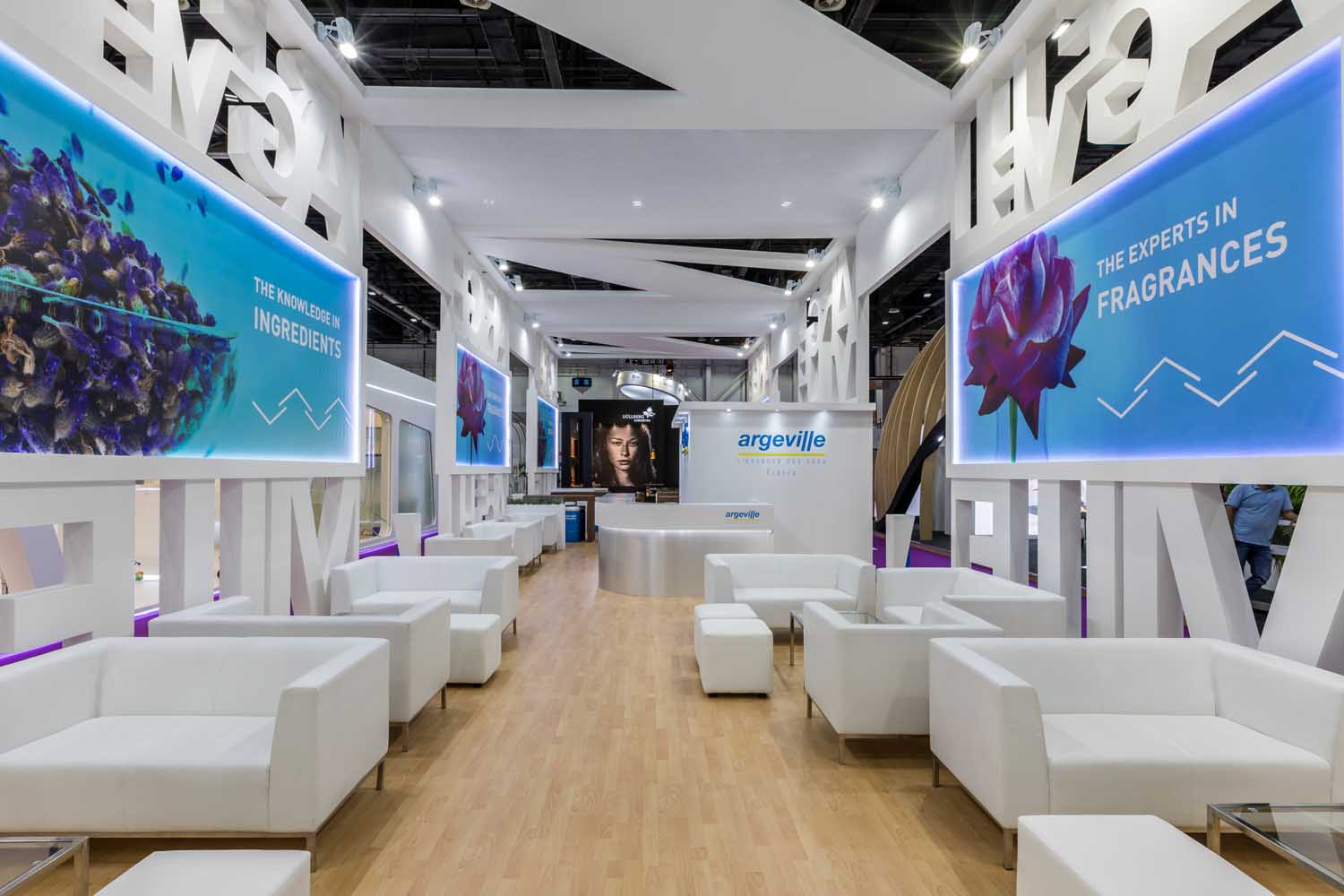
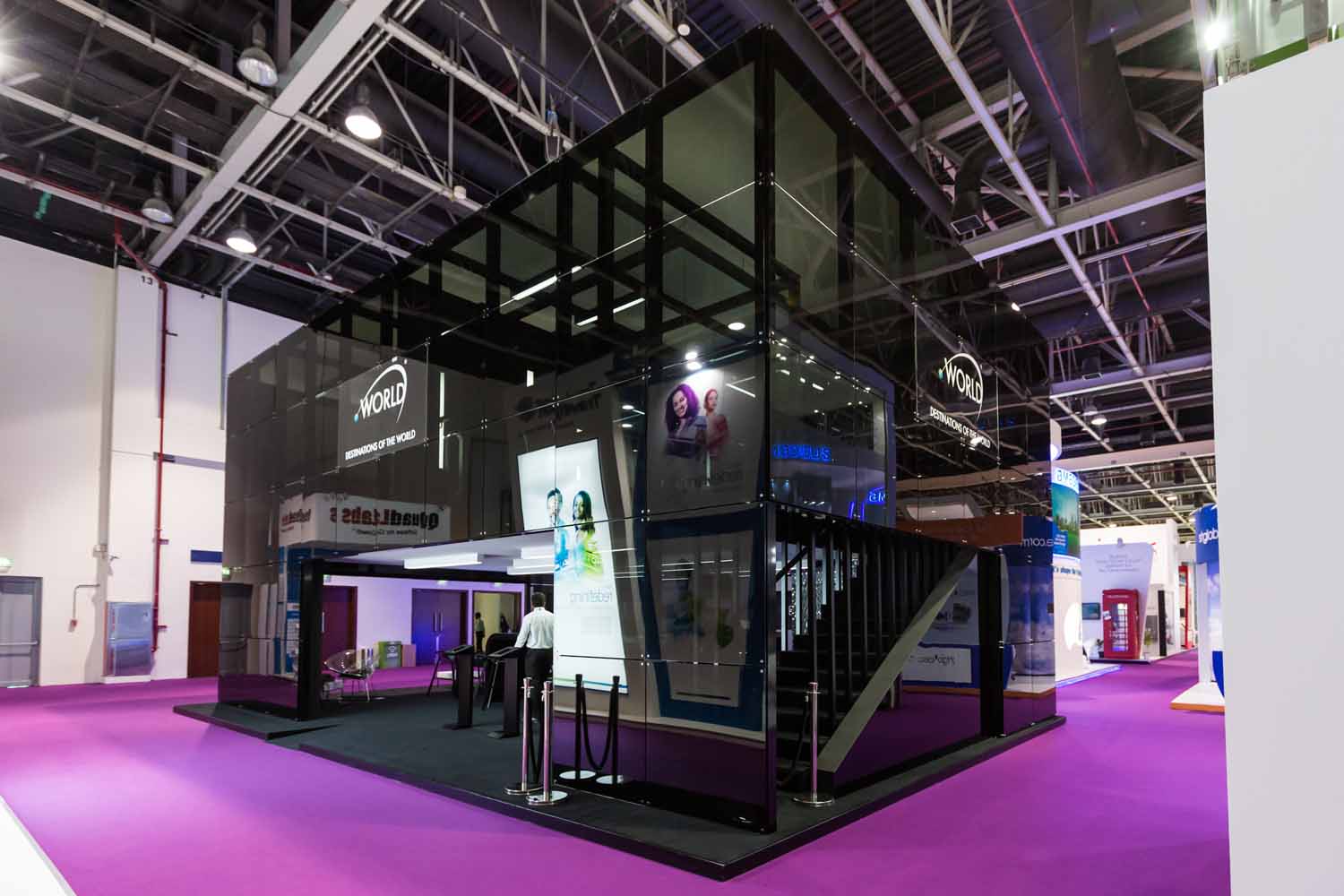 WNN Limited, a brand management company
WNN Limited, a brand management company Heightened branding and advertisements
Billboards, signage, banners and branded walls, when woven together seamlessly, can repeat and modulate the branding message, increasing memorability. They can be simple but highly effective. At the very least, they help visitors looking for the stand to see it from a distance.
- Softwood (Quadpack) at Beauty World 2016 recreates a perfume counter at a high-end department store. Branding is repeated multiple times, on the suspended roof, the walls and on the display cases in different sizes to create resonance.
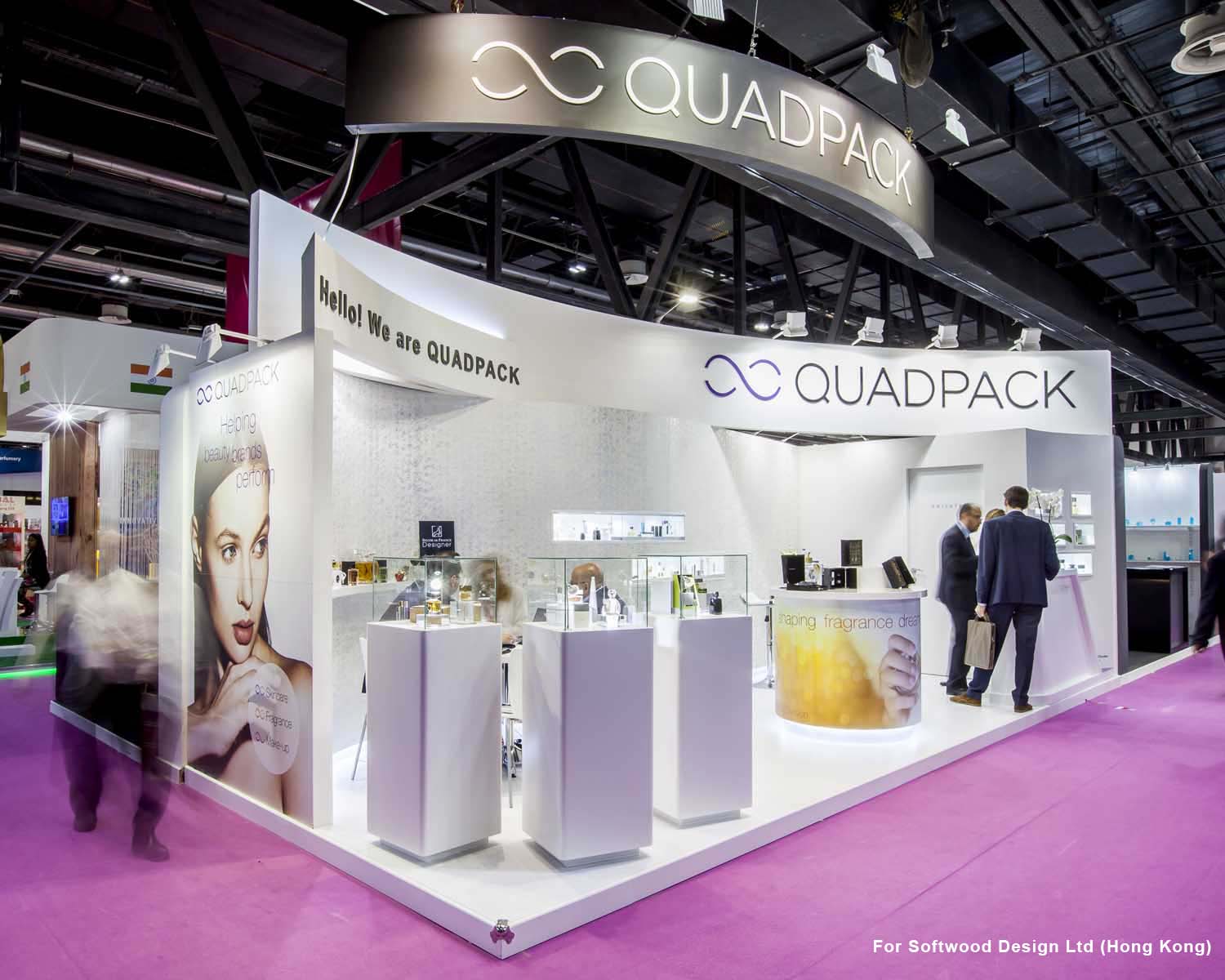
- Thermo Fisher at Medlab 2019 used large billboards shouting out the brand, using its signature red and white colours in three different ways. The heights and sizes of the billboards and one floating wall add variation and dynamism to the booth.
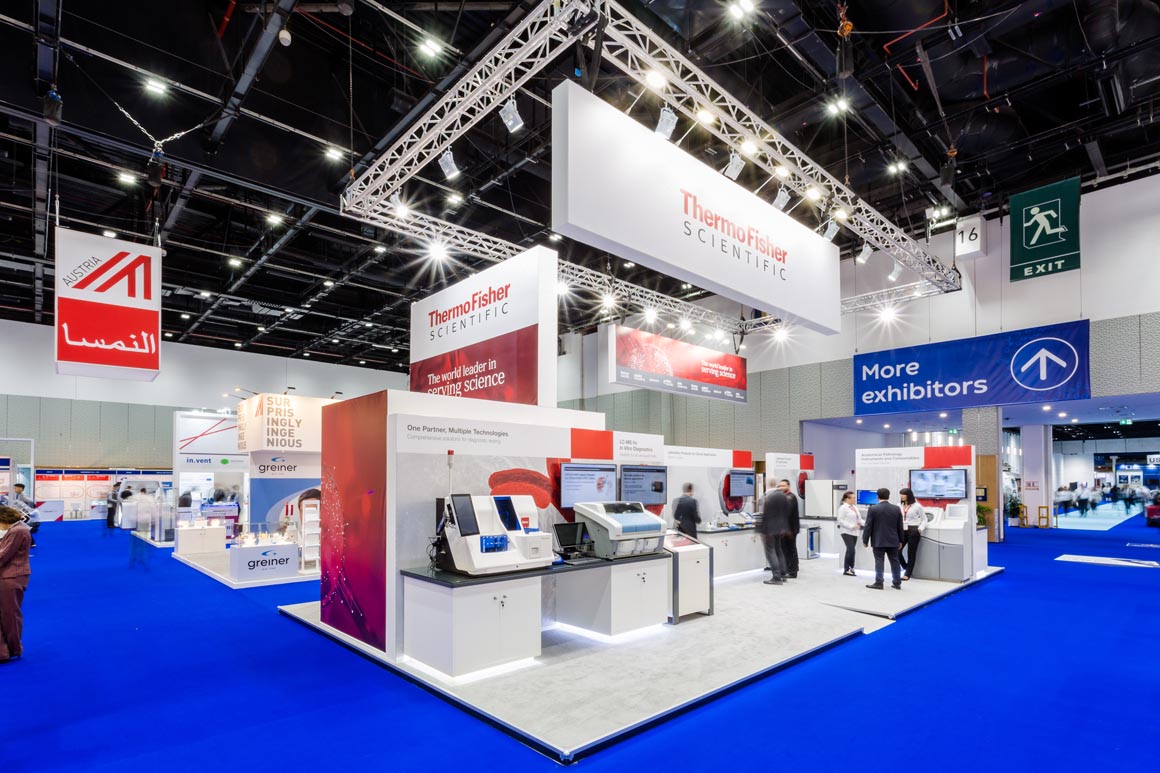
Walls and Panelling
Another feature that can be used to break up the space of an exhibition stand is walls and panels. They can segment the area into different rooms and zones, as well as serving as another canvas for brand messages and images. For BIORAD (PHILEOG) at Medialab 2017. The stand is roofless. The space is structured using open-sided walls and counters.
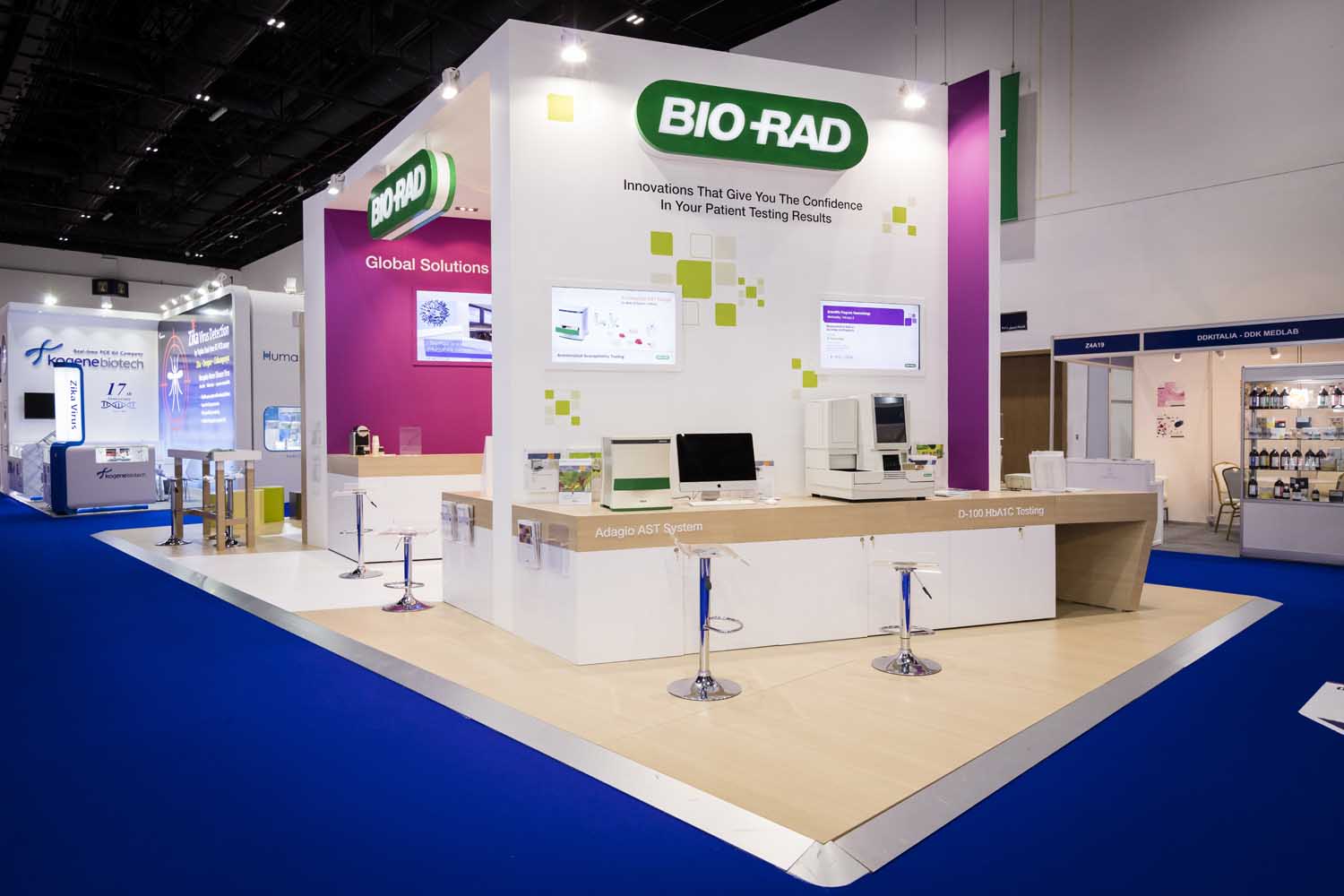
Double Deck / Second Level Floor / Lounges
Adding a second level to an exhibition stand makes a unique statement to visitors. Not only is it a way to cost-effectively create more space for the exhibition but it shows a company’s commitment to connecting customers and to providing for their needs. Having a second level with a lounge area is one sure way encourage guests to spend more time in the structure and to talk with company representatives. Three recent but different examples of multi-floor installations are:
Ground Installation
Another innovative form for the modern exhibition stand is the ground installation set up for Airbus at the International Defence Exhibition and Conference 2019. The key elements of which were a low platform, a huge eye-catching overhanging open roof serving double duty for branding and lighting. The way the space is used and the location of images, graphics and product mock-ups is a good example of a stand well done.
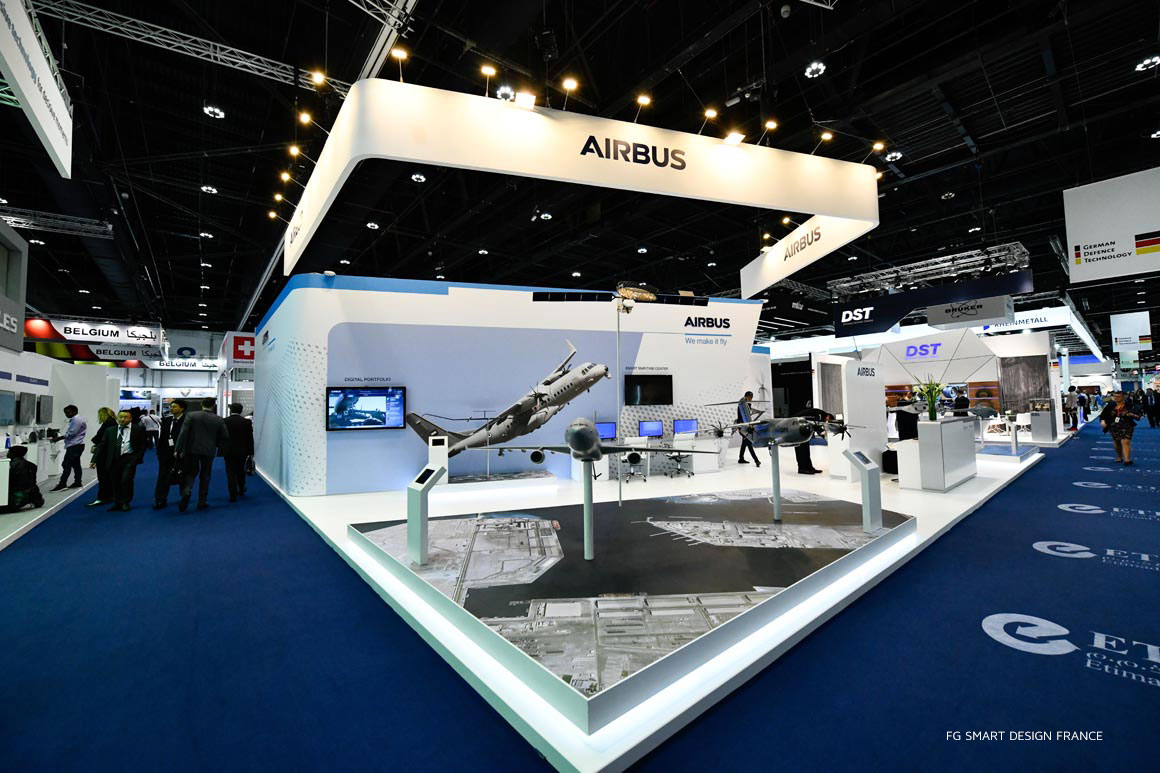
Exhibition Stand Creativity to Maximise Brand Impact
Modern exhibition stands often resemble art installations more than the plan booths of the mid-20th century. It’s often said in the industry that you only need 3 seconds to get a potential customer’s attention and 10 minutes to promote your business. One way to seize somebody’s interest is to engage their senses. Use colour, depth, texture and manipulate space to create interest and engagement. Vary shapes and sizes of stand components to create multiple levels in your exhibition stands. Contrast open with enclosed spaces. Display company name, graphics and branding elements in more creative ways.
If you are planning to have your design concept brought to life and to boost the impact of your next exhibition booth, get in touch today.
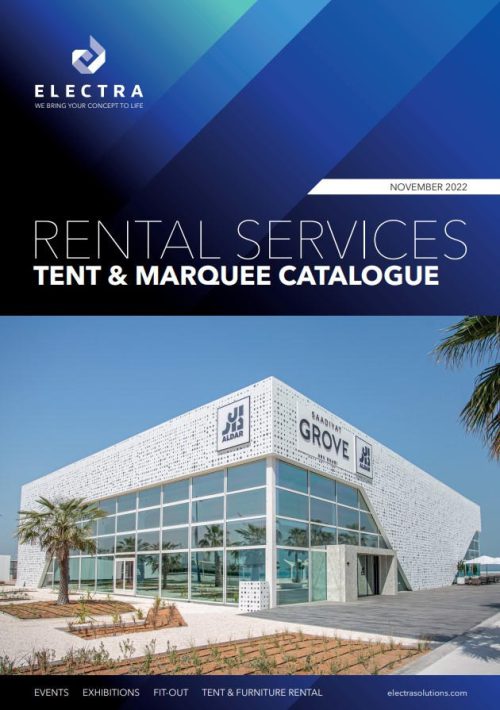

Download our Catalogues to find the right solutions for your next project
Tent Catalogue
Furniture Catalogue
Enter your name, email and phone number below:
Enter your name, email and phone number below:
